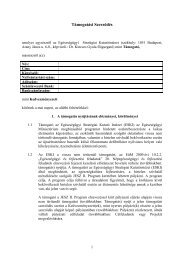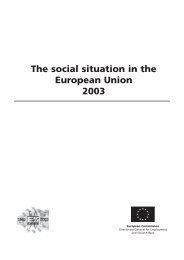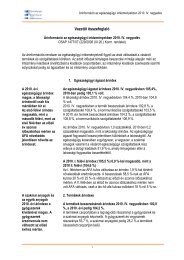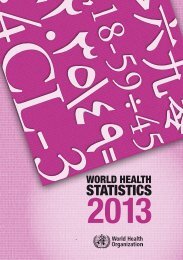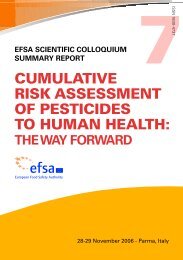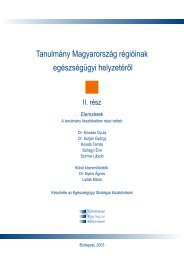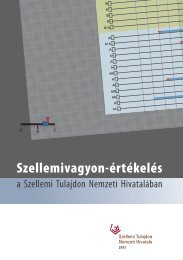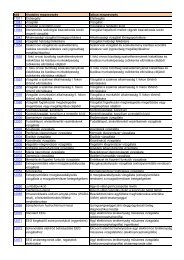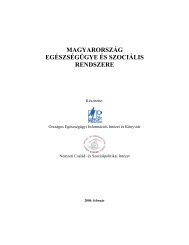Mainstreaming occupational safety and health into university ...
Mainstreaming occupational safety and health into university ...
Mainstreaming occupational safety and health into university ...
Create successful ePaper yourself
Turn your PDF publications into a flip-book with our unique Google optimized e-Paper software.
<strong>Mainstreaming</strong> <strong>occupational</strong> <strong>safety</strong> <strong>and</strong> <strong>health</strong> <strong>into</strong> <strong>university</strong> educationE u r o p e a n Ag e n c y f o r Sa f e t y a n d He a l t h a t Wo r k2. Possibilities for the prevention of hazardsTopics related to responsible guidance for lab courses intended for students werelisted, <strong>and</strong> legal regulations were discussed. This included considerations concerningthe use of appropriate personal protective equipment as well as appropriate buildings,structures <strong>and</strong> laboratory equipment. The teaching staff are instructed about howto adhere to threshold limit values, to minimize exposure (see the example below)<strong>and</strong> to collect all available information about hazardous substances (references werenamed).3. Information related to good laboratory practiceThis chapter offers numerous suggestions on how to organise lab courses includingproper management by motivation. Examples for experiments which help in thelearning of safe laboratory practice are presented. Additionally it provides advice onhow to write laboratory user guides <strong>and</strong> lab course manuals. This includes questionsconcerning rooms, flues, protective equipment, techniques, <strong>and</strong> h<strong>and</strong>ling ofemergency situations, as well as the establishment of working conditions which avoidstress.4. Discussion related to didacticsStatements are presented related to the question about whether students shouldstart working with hazardous chemicals during lab courses in the <strong>university</strong>, <strong>and</strong>which is the best moment during education to start to h<strong>and</strong>le these issues.5. Practical experiences <strong>and</strong> sources of errorThis chapter describes aspects of work hygiene. Possibilities for the disposal ofsubstances with different chemical properties are discussed. Typical mistakesmade when students pour or decant chemicals are named. Students <strong>and</strong> teacherswere cautioned about stress as a possible origin of dangerous situations, <strong>and</strong> wereinstructed on how to prevent stress.In addition to the structure described above, any item can be searched for using anintegrated search-engine. In the future the website will be exp<strong>and</strong>ed to provide anopen forum for discussion.Problems facedNeither of the project teams reported that there were any major problems during thedevelopment <strong>and</strong> implementation process.Generally speaking, the most important challenge for both platforms, as forany internet-based information portal, is to keep it up-to-date with the relevantinformation: each change in European or national legislation may result in a substantialrenewal of data. One example to be confronted will be the inclusion of the GloballyHarmonised System of classification <strong>and</strong> labelling (GHS) <strong>into</strong> both platforms.The KMR information platform is currently under reconstruction due to new legislationconcerning the h<strong>and</strong>ling of dangerous substances. Nevertheless, the 2005 versioncan still be completely accessed online <strong>and</strong> its instructions can still be recommendedfor use. The new version will be launched as soon as the new decrees on laboratory<strong>safety</strong> are adopted.36



